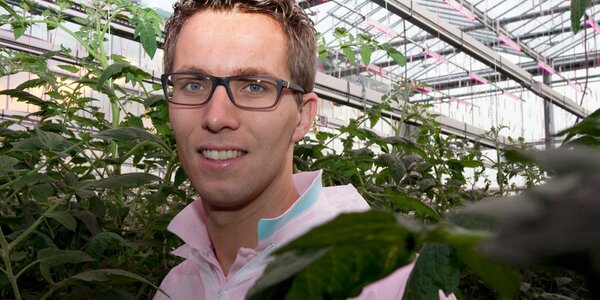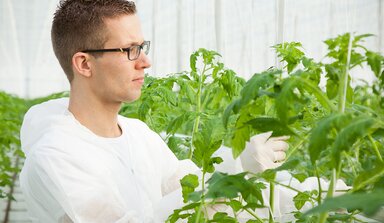Light at centre of crop advice
Willem Valstar gives advice to tomato growers both at home and abroad. At the centre is the amount of light available – natural and artificial. A growth model indicates the best approach to take under the local conditions and with the technology available.
Valstar has clients in the Netherlands, England and Poland. The level of technology varies but in all cases he constructs his advice systematically. “First we consider what techniques are available, which crops are grown, the local climate conditions and when the client wants to supply. On the basis of this we create the ideal cultivation plan,” he says.
“Light plays a crucial role in this. All decisions are based on it. We ask, is natural light the only light available and what are the local conditions? Is assimilation lighting in the form of SON-T or LED? How many hours can be lit? When you’ve answered all these questions you know how much light there is over the whole year.”
Growth model
Valstar inputs these details, together with the amount of available CO2 and the expected temperature regime, into the growth model. This then produces the planting date, the quantity of plants, stem density, pruning policy etc. The model was developed by a member of the Alliance Greenhouse Crop Consultants, a partnership of ten independent tomato, pepper and cucumber advisors in the Netherlands who share knowledge, support each other and keep each other on the ball. They are all internationally active. Willem Valstar joined the alliance last year.
“Growers abroad are often not accustomed to thinking systematically and to trusting a model," he says. “The reason for making a calculation with a model often depends on the problems you come up against. For example, not enough large tomatoes in the beginning. The calculation might indicate that the grower is maintaining too many stems too early.”

Willem Valstar
Developments abroad
He’s noticed that Poland is developing fast. A lot of nurseries were built two years ago most of which were modern. “Their cost price is lower and over the past few years the kilo prices were higher than in the Netherlands,” he says. Counteracting the lower cost price and the higher price of the product is lower productivity as a result of the poorer light conditions and certainly the limited availability of CO2.
He notices an increasing interest in England for LEDs, for both top lighting as well as interlighting. “They often receive fixed prices for the product – split into summer and winter prices. That is a good basis for investment. Despite the higher price level of the LEDs I expect to see a big increase.”
Diffuse coating
A subject that is often discussed, both at home and abroad, is a diffuse coating. Valstar emphasises in his consultations that if you choose a diffuse coating it means that you have to adjust your entire way of cultivating if you want to achieve optimum results. “This realisation is starting to sink in,” he notices. “A diffuse coating can make a big improvement in a lit crop and ease the problem of blossom end rot.” For example he has some Polish clients with pink tomatoes that suffer from blossom end rot during the hot continental summers. Then a diffuse coating can help a great deal.
